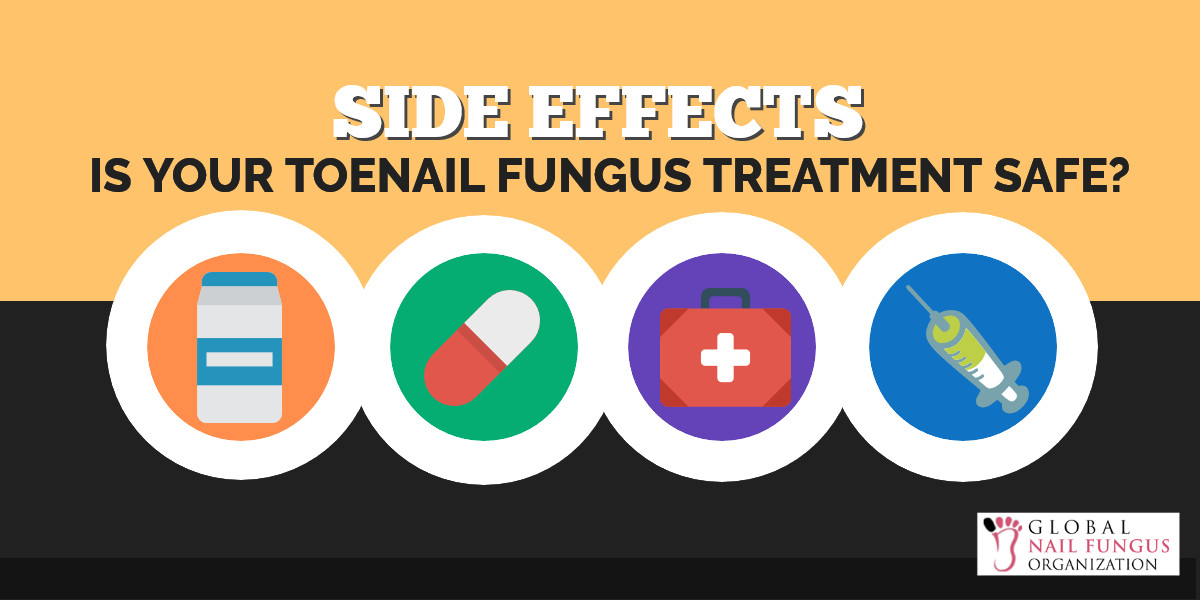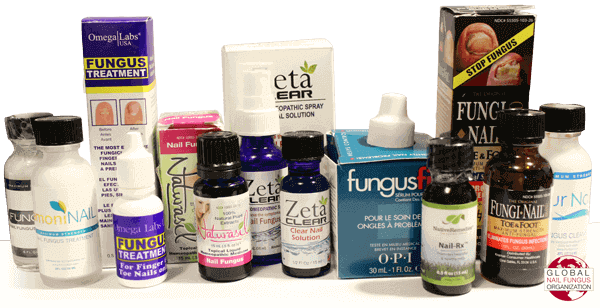 Side Effects: Is Your Toenail Fungus Treatment Safe?
Side Effects: Is Your Toenail Fungus Treatment Safe?
Table of Contents
Introduction – What Is Nail Fungus?
There may be more to your yellowish and brittle toenail than you think. Not every toenail looks the same, but if yours is looking less than normal compared to your normal ones, then maybe you have nail fungus.
Toenail fungus is an infection and the most common disease of the nails. It is also known as onychomycosis and can be caused by different dermatophytic fungi. It begins as a yellow or white spot under the nail, progressing to affect the entire nail and surrounding skin as the infection worsens. Infected nails may be brittle or crumbly, distorted, discolored, and thickened. In worst cases, the entire nails may even become detached from the nail bed.
What Happens When Nail Fungus Is Left Untreated?
Nail fungal infection will not get better if just left alone, so do not shrug if off even if you feel like the case is only in its early stages. In worse cases, it may progress to a more severe condition — which would make it painful and might be a cause for a spread of infection in other parts of your foot. It will also be harder to treat a nail fungus infection if it’s already in the moderate to severe case.
Common Treatments of Nail Fungi and their Side Effects
a. Anti-fungal nail cream/topical ointments
Topical nail creams are best applied to the infected nails after soaking. It is recommended to thin the nails first to help the medication get through to the underlying fungus.
It normally takes a while to see results with anti-fungal nail creams, but they are deemed as the safest and most convenient option for treating nail fungus, especially for mild to moderate cases.
To prevent the growth of fungus, apply undecylenic acid to the infected skin simultaneously with the anti-fungal nail ointment. Undecylenic acid is a fatty acid that prevents the growth of fungus.
b. Anti-fungal pills/oral medicine
Doctors may prescribe an oral medicine as treatment for moderate to severe nail fungus infection. This can replace the infected nail by helping a new and healthy nail grow. Depending on the drug, this treatment can take about 12 weeks or longer, with the end result visible only when the nail grows back completely.
While deemed more effective, oral medications for nail fungus have more side effects as well. This is why doctors do not recommend them for pregnant or nursing mothers, people with liver or heart disease, and those who take certain medications.
c. Medicated nail polish
Anti-fungal nail paints or polishes are painted on the infected nails and surrounding skin daily. Also called ciclopirox topical solutions, these polishes are not the same as the regular and decorative nail polishes. These work by stopping the growth of the fungus in the toenails or fingernails.
Ciclopirox nail paints are applied once a day, usually at the same time every day, to improve the condition of the nails. The next application must be over the medication already on the nails until they all pile in layers. After a week, the layers are cleaned with cotton or tissue soaked with rubbing alcohol. Fresh applications are then applied every day.
Medicated nail polishes for nail fungal infection are not considered to be as effective as oral medications; it takes six months or longer before there’s a visible result. However, they are also considered generally safer than oral anti-fungal solutions.
d. Essential oils
Some people prefer using alternative medications that are deemed natural. These include essential oils like tea tree oil, which is applied topically on the infected area twice a day. Tea tree oil, or melaleuca oil, is said to be antimicrobial and can cure a variety of dermatological ailments like acne, skin infections, and nail fungal infections.
Diluted tea tree oil applied topically is generally safe. However, there is little evidence that it is effective in treating nail fungus.
Another popular alternative nail fungus medicine is Vicks VapoRub, a brand of mentholated topical cream. But again, there is no conclusive evidence of its effectiveness.
Surgical and Laser Treatments and their Side Effects
a. Removal of the Nail by Surgery
For severe or recurring fungal nail infections, surgical nail removal may be the answer. It is not always recommended, but it is considered if the infection is acute and is already affecting the health of the sufferer.
This involves the removal of a part of the nail or the entire nail. To prevent future fungus infection in the area, the doctor will destroy the nail matrix by applying chemical to the cuticle area where the nail has been removed. The wound will heal within weeks, but the nail will take six months (fingernails) to 12 to 18 months (toenails) to grow back.
Although effective, nail surgery can be painful. It can also be expensive. Additional treatment will also be necessary (like applying topical solutions regularly) to ensure that there will be no further infections after the surgery.
b. Laser Treatment
Like nail surgery, laser treatment is recommended for stubborn fungal nail infection. It works using a highly focused beam of light on the infected nail to destroy the fungus.
Although early research suggests laser treatment is a promising nail fungus cure, more study is needed to solidify this claim. Laser treatment also needs several sessions and takes about six months to take effect, making it a very expensive option for nail fungus treatment option.
Conclusion: Safest Nail Fungus Treatment
There are several choices for toenail fungus treatment, but not all of them can deliver the desired result. For every advantage and benefit of each treatment option, there are disadvantages and even side effects. The effectiveness of the medications and treatments isn’t dependent on their price as well.
Nail fungus can also even return even after treatment so proper hygiene and regular application of topical solutions can help decrease this possibility.
Indeed, treating toenail fungus is tricky and not that easy. Whatever nail fungus treatment option you choose, though, consult with your doctor first. It is imperative that your treatment choice should be safe for you.






